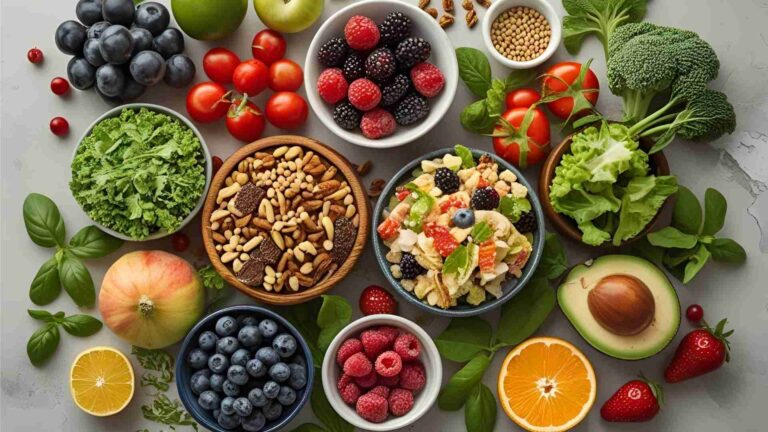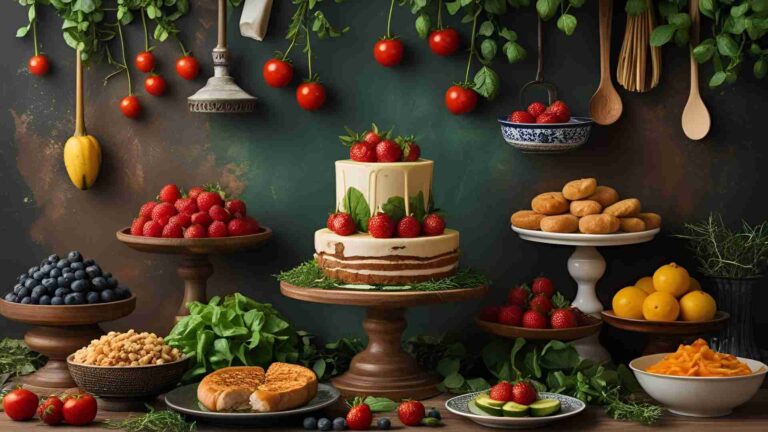Is starting a food blog worth it in this day and age?
Discover if starting a food blog is worth it. Explore pros, cons, niches, SEO tips, and monetization strategies for success.
In the digital landscape is buzzing with food content—Instagram reels, YouTube shorts, and TikTok videos dominate attention spans. Yet, the question remains: is starting a food blog still a viable pursuit? For amateur cooks passionate about sharing simple, healthy, and culturally specific recipes, the idea of launching a food blog as a hobby with hopes of gaining traction is both exciting and daunting. This comprehensive guide delves into the realities of food blogging, weighing its rewards against its challenges, and offers actionable strategies to succeed in a crowded market.
Why Consider a Food Blog?
Food blogging is more than just posting recipes; it’s a creative outlet that blends culinary passion, storytelling, and community-building. For two roommates who love cooking accessible, healthy dishes rooted in their cultural cuisine, a food blog could be a fulfilling way to document their journey and connect with others. Here’s why it’s worth considering:
Creative Expression
Food blogging allows you to showcase your personality through recipes, photography, and writing. Crafting a visually appealing dish, styling it for photos, and narrating its cultural significance can be deeply satisfying. For amateurs, this creative process can elevate everyday cooking into an art form.
Passion-Driven Pursuit
If cooking is your joy, a food blog transforms that passion into a shareable legacy. Preserving family recipes or introducing your cuisine to a global audience fosters a sense of purpose. A blog focused on easy, healthy recipes could resonate with home cooks seeking practical inspiration.
Community Engagement
Food blogs build connections. Readers who share your love for simple, culturally rich dishes can become a loyal audience. Engaging with comments, emails, or social media followers creates a sense of belonging, especially for niche communities.
Learning and Growth
Blogging hones multiple skills: food photography, SEO, content marketing, and even web design. As amateurs, you’ll learn to craft compelling narratives, optimize posts for search engines, and create drool-worthy visuals, all of which are transferable to other creative or professional endeavors.
Potential for Monetization
While not immediate, food blogs can generate income through ads, affiliate marketing, sponsored posts, or selling digital products like e-cookbooks. Successful bloggers often diversify revenue streams, turning a hobby into a side hustle or full-time career.
Long-Term Opportunities
A well-established blog can open doors to cookbook deals, brand collaborations, or speaking engagements. Bloggers like Pinch of Yum and Half Baked Harvest started as hobbies and grew into culinary empires, proving the potential for growth.
The Challenges of Food Blogging
Despite its allure, food blogging is not a quick path to fame or fortune. The market is saturated, and standing out requires dedication. Here are the key hurdles:
Intense Competition
With millions of food blogs and social media accounts, breaking through the noise is tough. Large recipe sites like Allrecipes and corporate-backed platforms dominate search results, making it hard for new bloggers to rank on Google.
Time-Intensive Process
Creating a single blog post involves recipe development, testing, photography, writing, and editing. For amateurs balancing other responsibilities, posting consistently (e.g., 2-3 times weekly) can feel overwhelming. A food blogger on Reddit noted, “Writing a recipe post is more work than other niches because you have to cook.”
Monetization Delays
Earning significant income takes time. Ad networks like Mediavine require at least 50,000 monthly sessions, often translating to 100+ recipes. At two recipes per week, that’s a year of consistent effort before monetization kicks in.
Technical Learning Curve
Blogging demands skills beyond cooking. Understanding SEO, managing a WordPress site, and mastering social media marketing can be daunting for beginners. Poorly optimized sites risk low traffic and visibility.
Risk of Burnout
The pressure to produce fresh content, engage on social media, and keep up with trends can lead to exhaustion. Without a clear strategy, the grind may outweigh the joy.
Is There Still a Market for Food Blogs?
Despite the rise of video content, written food blogs remain relevant. Here’s why:
Evergreen Demand
Recipes are “future-proof” content. Platforms like Allrecipes attract over 50 million monthly views, and niche blogs like Budget Bytes thrive by catering to specific audiences. People still search Google and Pinterest for written recipes, especially for meal planning or detailed instructions.
Limitations of Video Content
Instagram and YouTube Shorts are entertaining but often lack depth. Fast-paced videos with jump cuts are hard to follow for actual cooking. As one Reddit user commented, “I want to screenshot a recipe, not watch a video.” Blogs offer scannable, printable formats that videos can’t replicate.
Search Engine Reliance
Google remains the go-to for recipe searches. Well-optimized blogs with high-quality content can rank for long-tail keywords like “easy healthy Indian dinner recipes.” Pinterest also drives significant traffic to blogs with visually appealing pins.
Niche Opportunities
General food blogs struggle, but niche blogs thrive. Focusing on healthy, amateur-friendly recipes in a specific cuisine (e.g., simplified South Asian dishes) can attract a dedicated audience. Unique angles, like explaining ingredient roles or cultural histories, set you apart.
Defining Your Niche: A Recipe for Success
To stand out, your blog needs a clear niche. Here’s a suggested approach based on your idea of simple, healthy, culturally specific recipes:
Niche Concept
Blog Focus: Easy, healthy recipes for beginners, rooted in your cultural cuisine (e.g., South Asian, Mediterranean, etc.), emphasizing accessibility and minimal equipment.
Unique Angle: Blend recipes with educational content—explain why ingredients work, their cultural significance, and how to adapt dishes. For example, a post on chickpea curry could detail the history of chickpeas, their nutritional benefits, and flavor contributions.
Content Series:
- Recipes: Include a basic recipe, ingredient functions, and cultural context. Example: “Why turmeric is the heart of this dish.”
- Ingredients: Deep dives into single ingredients (e.g., cumin’s history, uses, and flavor profile).
- Cuisine: Explore your cuisine’s evolution, key dishes, and staple ingredients.
Why This Works
This niche appeals to busy home cooks who want healthy, budget-friendly meals without complex techniques. The educational angle attracts curious foodies, while the cultural focus builds authenticity. Unlike generic recipe sites, your blog offers personality and context.
Building a Successful Food Blog: Step-by-Step
Starting a food blog requires strategic planning. Here’s how to launch and grow your blog:
1. Choose the Right Platform
- WordPress.org: The gold standard for flexibility and SEO. Avoid Wix or Squarespace, as they limit customization.
- Hosting: Opt for reliable hosts like SiteGround or Bluehost. Expect costs of $5-15/month.
- Recipe Plugin: Use WP Recipe Maker (WPRM) for SEO-friendly recipe cards. Cost: ~$49/year.
2. Design and Setup
- Theme: Choose a clean, food-focused theme like Foodie Pro or Astra. Cost: $50-100 one-time.
- Image Standards: Use 1200x1200px for featured images and 1200x1800px for others to optimize for Pinterest and SEO.
- No Dates in URLs: Keep URLs timeless (e.g., /chickpea-curry, not /2025/06/chickpea-curry) to avoid deterring clicks.
3. Master SEO and Keyword Research
- Tools: Use Ahrefs or Semrush for keyword research. Look for low-competition, long-tail keywords (e.g., “quick healthy paneer recipes”). Cost: $99-200/month (optional, start with free trials).
- On-Page SEO: Include keywords in titles, headers, and meta descriptions. Write 1,500-2,000-word posts with actionable tips.
- Backlinks: Guest post on niche blogs or collaborate with food influencers to build authority.
4. Create High-Quality Content
- Recipes: Test recipes thoroughly. Include step-by-step photos and printable recipe cards.
- Photography: Invest in a decent camera (e.g., Canon EOS M50, ~$600) or use a smartphone with good lighting. Edit with free tools like Canva.
- Writing: Keep recipes concise but engaging. Add personal stories or cultural insights to connect with readers.
5. Leverage Social Media
- Pinterest: Create eye-catching pins linking to blog posts. It’s a top traffic driver for food blogs.
- Instagram: Share short recipe videos or behind-the-scenes content. Use reels to showcase quick tips.
- YouTube: Embed companion videos in blog posts. Focus on tutorials or ingredient explainers.
- Facebook: Build a community with engaging posts and recipe shares. Allocate 50% of your ad budget here if investing in ads.
6. Monetization Strategies
- Ads: Apply to Mediavine or AdThrive after reaching 50,000 monthly sessions. Earnings: $10-30 per 1,000 views.
- Affiliate Marketing: Link ingredients to Amazon or grocery delivery services. Earnings: 4-8% per sale.
- Sponsored Posts: Partner with food brands once you have 10,000+ monthly views. Rates: $100-500/post.
- Digital Products: Sell e-cookbooks or meal plans. Price: $5-20 each.
7. Avoid Common Pitfalls
- Inconsistent Posting: Aim for 2-3 posts weekly to build momentum.
- Poor SEO: Neglecting keywords or backlinks limits visibility.
- Low-Quality Photos: Blurry or dark images deter readers.
- Over-Reliance on Video: Videos complement blogs but don’t replace written content.
Costs of Starting a Food Blog
Here’s a breakdown of initial and ongoing expenses:
| Item | Cost (USD) | Notes |
|---|---|---|
| Domain Name | $10-15/year | Via Namecheap or GoDaddy |
| Hosting | $5-15/month | SiteGround, Bluehost |
| WordPress Theme | $50-100 one-time | Foodie Pro, Astra |
| Recipe Plugin (WPRM) | $49/year | Essential for SEO |
| Camera (Optional) | $600 one-time | Canon EOS M50 or similar |
| SEO Tools (Optional) | $99-200/month | Ahrefs, Semrush (free trials available) |
| Total Initial Cost | $700-800 | Excluding optional tools |
| Monthly Ongoing Cost | $5-20 | Hosting + domain renewal |
Visualizing Your Blogging Workflow
To streamline your process, here’s a flowchart outlining the steps to create a blog post:

This workflow ensures efficiency and consistency, critical for long-term success.
Real-World Insights from Food Bloggers
Reddit discussions reveal mixed sentiments about food blogging:
- Lokimir, a food blogger, emphasized the time-intensive nature of recipe development and photography but believes it’s worth it with effort. They designed their site (Foodful Thoughts) without a theme, showcasing the value of customization.
- SonilaZ highlighted the need for 100+ recipes to join ad networks, recommending WordPress and WPRM. They advised against dates in URLs to keep content evergreen.
- TheKettleGuy found early success with a niche blog, monetizing via Mediavine with just 11 recipes due to seasonal traffic spikes. They stressed the importance of topical authority and SEO.
- LowbrowFancy, a new blogger, loves the process despite slow progress, underscoring the joy of learning SEO and photography.
These insights confirm that while challenging, food blogging rewards persistence and strategy.
Is It Worth It for You?
For amateur cooks like you and your roommate, starting a food blog is worth it if:
- You’re Passionate: If you love cooking and sharing your culture, the creative fulfillment is reason enough to start.
- You’re Realistic: View it as a hobby initially, with potential income as a bonus. Expect 1-2 years to gain traction.
- You’re Committed: Dedicate time to learning SEO, posting consistently, and engaging with your audience.
- You Have a Niche: Your focus on healthy, culturally specific, beginner-friendly recipes with an educational twist is unique and marketable.
If monetization is your primary goal and you lack time, the slow ROI might frustrate you. Instead, treat it as a primary platform and use social media to drive traffic.
Alternative Paths
If a blog feels overwhelming, consider these options:
- YouTube Channel: Create short, leveraging your niche for tutorials or ingredient explainers. Embed videos in a basic blog.
- Instagram/Twitter: Focus on short-form video content and link to a simple site for written recipes.
- Podcast: Share cooking tips and cultural stories via audio, with a blog as a secondary resource.
These formats require video or audio skills but can complement a blog, driving traffic through cross-promotion.
Final Thoughts
Starting a food blog is a journey of passion, creativity, and resilience. While the market is crowded, a niche blog offering simple, healthy, culturally specific recipes with educational content can carve out a loyal audience. By mastering SEO, leveraging social media, and staying consistent, you can turn a hobby into a rewarding platform—perhaps even a career. The key is to start for the love of food, not just the promise of profit, and let your unique voice shine.
Please share these Is starting a food blog worth it in this day and age? with your friends and do a comment below about your feedback.
We will meet you on next article.
Until you can read, Reddit as a Traffic Source for Food Creators






